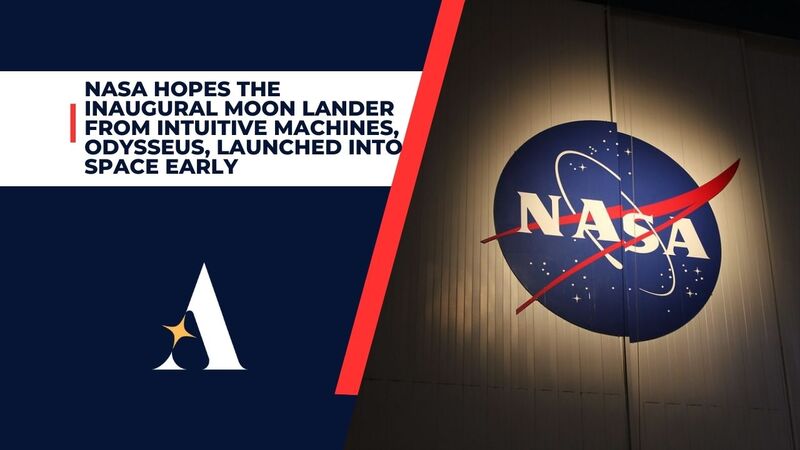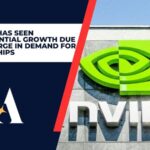Houston-based Intuitive Machines hopes to become the first non-government company to land on the moon when their IM-1 spacecraft launches Thursday on a SpaceX rocket.
Odysseus, its Nova-C lander, will carry five NASA experiments to the lunar surface as well as commercial payloads such as metal jacket fabric from Columbia Sportswear and moon figurines from Jeff Koons art studio.
IM-1 Mission
Houston-based SpaceX hopes to become the first private enterprise since Apollo 17 reached the moon in 1972, when their final Apollo mission touched down at Kennedy Space Center’s historic launch pad 39A. Their IM-1 mission launched overnight from Kennedy Space Center’s historic launch pad 39A.
At 1:05 a.m. ET on Feb. 15, a SpaceX Falcon 9 rocket lifted off from pad 39A of Kennedy Space Center the site of all but one crewed Apollo missions? carrying Intuitive Machines’ Nova-C lunar lander (Odysseus). Odysseus will arrive at Malapert A crater on Feb 22 for its expected landing.
Fewer than 45% of lunar landings have been successful throughout Space Age history, yet Intuitive Machines executives were confident Nova-C would reach its destination. After studying Beresheet’s failure and making adjustments as a result including using redundant inertial measurement units that should help avoid an overreaction such as that which caused Beresheet’s crash Intuitive Machines holds a contract with NASA under their Commercial Lunar Payload Services initiative for cargo delivery as well as science projects.
Nova-C Lander
Houston-based ispace, unlike previous lunar landing missions by national space agencies, conducted its inaugural lunar mission IM-1 using a Nova-C lander; its name being an anagram for “new and cargo 100,” representing capacity.
NASA’s Commercial Lunar Payload Services program seeks to deliver cargo and science projects more frequently to the moon in support of NASA’s future crew program. With the IM-1 mission in mind, this lander will conduct its task as part of this endeavor.
Intuitive Machines faces an uphill climb in making its lunar lander successful given previous failures by commercial spacecraft such as Astrobotic’s Peregrine lander from Pittsburgh-based Astrobotic in January – it arrived at the moon, only to experience an unexpected propellant leak and be lost forever before reaching its intended landing site.

Odysseus Lander
SpaceX’s Falcon rocket took to the skies Thursday at 1:05 am EST after postponing on Wednesday to send Houston-based Intuitive Machines’ Odysseus lander near the moon’s south pole for landing near its south pole – marking a private American company’s first attempt to land since Apollo 17’s Gene Cernan and Harrison Schmitt finished up their program more than fifty years ago.
Odysseus will carry both commercial and NASA experiments aboard its suborbital journey. Customers include Columbia Sportswear’s experiment to test metallic jacket fabric as thermal insulator; as well as Jeff Koons, who plans to send up 125 inch moon figurines packed in see-through cubes.
Homer, Homer’s hero from Homer’s Odyssey, will also fly six navigation and tech experiments for NASA aboard his Commercial Lunar Payload Services program launch lander. SpaceX plans on releasing another commercial lander built by Astrobotic Technology of Pittsburg by 2025.
Odysseus Mission Control
NASA hopes the inaugural moon lander from Intuitive Machines, Odysseus, launched into space early Tuesday as part of an experiment that could pave the way for astronauts to return to its surface in future missions. After separation from its Falcon 9 upper stage and drifting 230,000 miles toward its target location on Earth’s moon surface.
The Intuitive Mission-1 (IM-1) mission is an operational test for Intuitive’s Nova-C lander, carrying six NASA payloads that will conduct studies on lunar environments to prepare astronaut missions to explore them in depth. Furthermore, Intuitive has received two more contracts to supply two additional lunar exploration flights led by NASA that require Intuitive products for exploration missions.
Odysseus will land near the lunar south pole on February 22, becoming the first private spacecraft to successfully accomplish a lunar landing. Astrobotic Technology’s Peregrine failed its attempt last month; therefore a successful landing for Intuitive is doubly important and would open doors for larger contracts for both companies.
- Friday Intraday Trading Sees Nvidia’s stock Market Cap Momentarily Cross $2 Trillion
- Trump’s January 6 Civil Cases Proceed While Criminal Case Is Halted
- Trump Delivers Speech at the Columbia Black Conservative Federation Gala
- Trump Declares Strong Support for IVF Following Alabama Supreme Court Decision
- Schumer in Ukraine Declares US Backing During House Aid Standoff






